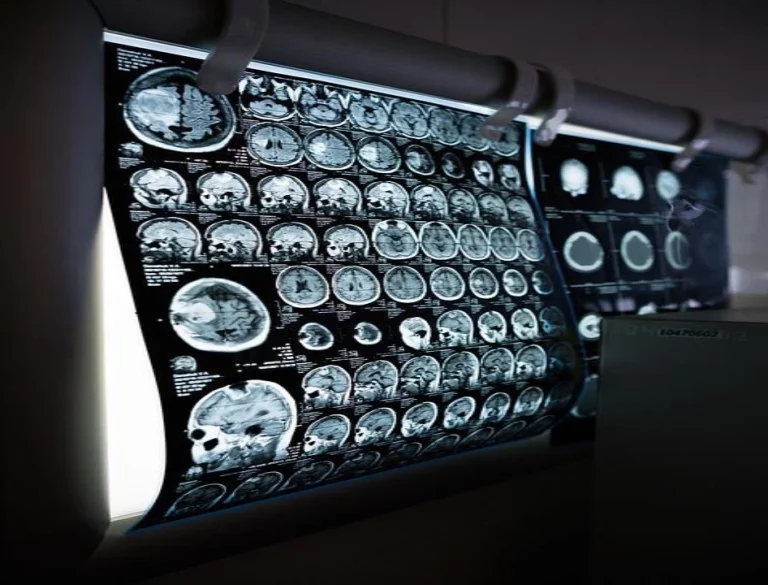Hemiplegia: Types, Causes, Symptoms, and Treatment
Hemiplegia is a disease condition characterized by the paralysis of one-half of the body. Anatomically, the brain is divided into the right and left hemispheres. A side of the brain determines the functioning of the opposite side of the body. If it is injured, the opposite body part becomes paralyzed.
This implies that if the right part of the body is affected, it is referred to as right hemiplegia. If the left part of the body is affected, it is referred to as the left hemiplegia. The control of muscle and sensation in the affected muscle is lost.

What are The Causes of Hemiplegia?
The movement of the body parts is primarily determined by the brain and the spinal cord. Failure of this to occur results in hemiplegia. Numerous conditions could result in hemiplegia and they are infection, trauma, stroke, multiple sclerosis, polio, spina bifida, brain tumors, muscular dystrophy, etc
1. Infection
Brain infections like meningitis and encephalitis can be very fatal if not treated immediately. They affect the functioning of the brain cell which is also similar in the case of brain abscesses.
2. Trauma
Trauma can result from violence, road traffic accidents, and fall. This can give rise to brain injuries such as compressed fracture, hematoma(epidural or subdural), and cerebral laceration. Injury to one side of the brain can result in hemiplegia on the other side of the body.
3. Cerebrovascular Accident
Stroke is the commonest of all the causes of hemiplegia. The major effect of stroke is the damage to the corticospinal tract in one hemisphere of the brain.
This implies that the deterioration of the right hemisphere will cause paralysis of the left aspect of the body and vice versa. This is because the corticospinal tract lengthens to the lower spinal cord where it intersects the brainstem. Hemiplegia can also occur in the case of transient ischemic stroke which is often referred to as a mini-stroke.
4. Multiple Sclerosis
This is a type of degenerating disease that destroys the neuron of the brain cells. Other examples of degenerative diseases are Parkinson’s disease, amyotrophic lateral sclerosis, and cortisol basal degeneration.
5. Spinal Cord Injury
This occurs when half of the spinal cord has defected. This will lead to loss of sensation and paralysis of the opposite side. This injury is known as Brown-Sequard Syndrome as it was initially diagnosed by this man in 1850.
6. Congenital Diseases
These are conditions that might have occurred during the development and delivery of a fetus which can result in hemiplegia. Examples of such are cerebral palsy and spina bifida.
7. Brain Tumor
Astrocytoma, meningioma, CNS lymphoma, and glioma are all types of brain tumors that can result in hemiplegia.
Signs and Symptoms of Hemiplegia
The major symptoms that are manifested in a patient with hemiplegia are:
1. Speech Difficulty
Patients usually find it difficult to speak. They can also have difficulty with swallowing food as well as respiration.
2. Pusher Syndrome
The whole weight of the body is exerted on a side of the body. This is a result of an injury to the brain which makes movement difficult. It can also result in pain.
3. Muscle Spasm
Hemiplegia can be manifested as seizures in severe cases. There can also be very painful muscle spasms.
4. Difficulty in Movement
Loss of motor skills would result in ataxia whereby the motor skills would is lost. The fist would be clenched, such a person would be staggering and stumping while walking, and there would be problems in moving the affected side.
5. Loss of Sensation
Hemiplegia results in partial or total loss of sensation at the affected body part. If the sensation loss is partial, a tingling sensation might be felt in the area.
Types of Hemiplegia
Below are the various types
1. Contralateral
In this case, damage to the brain
paralyze the opposite part of the body to the affected brain.
2. Alternating
This type usually occurs in children especially those below the age of eighteen months. This tends to reoccurrence on either side of the body.
3. Facial
Facial hemiplegia usually affects one side of the face. Muscles of the affected part become paralyzed. In some cases, it might extend to a certain part of the body.
4. Spinal
This type affects one side of the spinal cord. Another name for spinal hemiplegia is Brown-Sequard syndrome. The paralysis of one part of the spinal cord, in turn, affects the corresponding part of the body. The feeling of sensation on the affected part is relinquished.
Treatment of Hemiplegia
Treatment of hemiplegia requires extensive treatment and rehabilitation of the patient. There is a need to identify the major cause of the condition to help regain motor function and to enhance the performance of activities of daily living. Below are the various methods used in regaining the motor functions:
1. Medications like lithium, antibiotics, and warfarin will suppress the symptoms.
2. Surgery can be carried out to correct contractors and other secondary problems.
3. Electric brain simulation
By stimulating the neurons in the brain, electric impulses are sent to the affected muscle. This alters brain function and accelerates muscle contraction.
4. Rehabilitation
This can be in the form of
- Use of assistive devices: The use of an assistive devices such as wheelchairs, braces, cane, and walkers helps to gradually regain the movement and function of the muscles. This is usually recommended by a therapist. This is one of the essences of consulting a medical expert as they will help ascertain the most suitable assistive device for you. They will also counsel you about the modification of your lifestyle.
- Psychotherapy: to assist in tolerating the psychological effect of the injury.
- Occupational Therapy: to enhance the use of affected body parts in performing activities of daily living.
Frequently Asked Questions
How Do You Detect Hemiplegia?
To confirm the presence of hemiplegia in a patient, there is a need to carry out the following examination and which includes:
Physical examination of muscle strength
Complete blood count to rule out infection
Electroencephalography
Computed tomography scan
Magnetic Resonance Imaging to view the image of the affected tissue
What are The Causes of Hemiplegia?
The movement of the body parts is primarily determined by the brain and the spinal cord. Failure of this to occur results in hemiplegia. Numerous conditions could result in hemiplegia and they are infection, trauma, stroke, multiple sclerosis, polio, spinal Bifida, brain tumors, muscular dystrophy, etc
What are the Types of Hemiplegia?
The types include the following:
Contralateral, Alternating, Facial, and Spinal hemiplegia
What Is The Best Treatment for Hemiplegia?
Treatment requires extensive treatment and rehabilitation of the patient. There is a need to identify the major cause of the condition to help regain motor function and to enhance the performance of activities of daily living.
Conclusion
Hemiplegia can be life-threatening and at the same time, it has no cure but does not progress over time. Proper management of the symptoms helps to reduce the patient’s symptoms and increases their ability to perform the activities of daily living.






